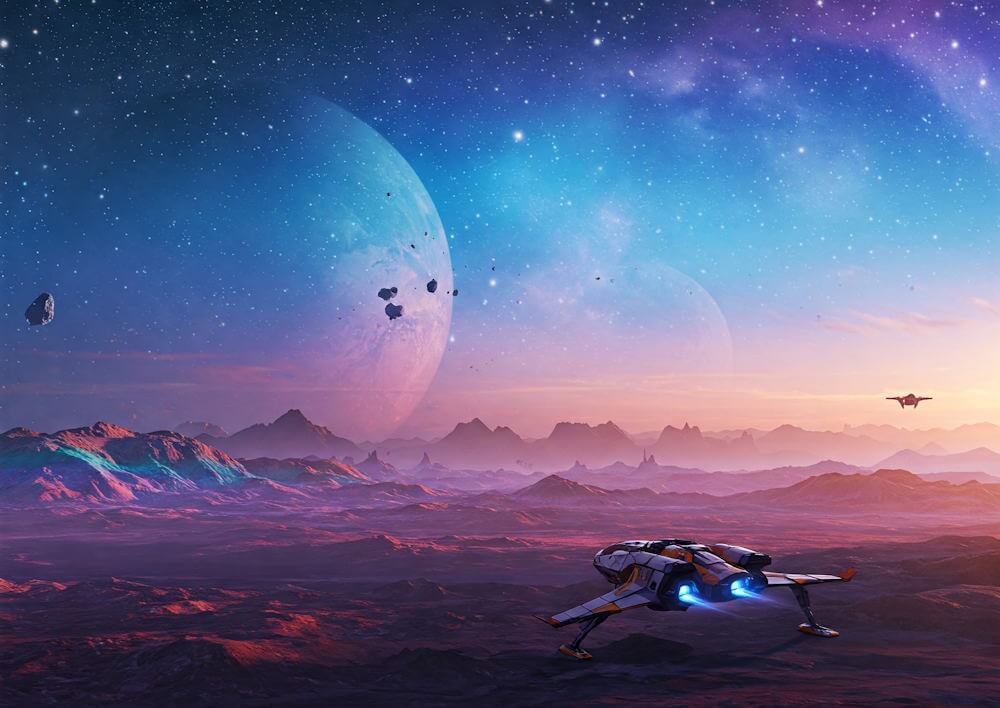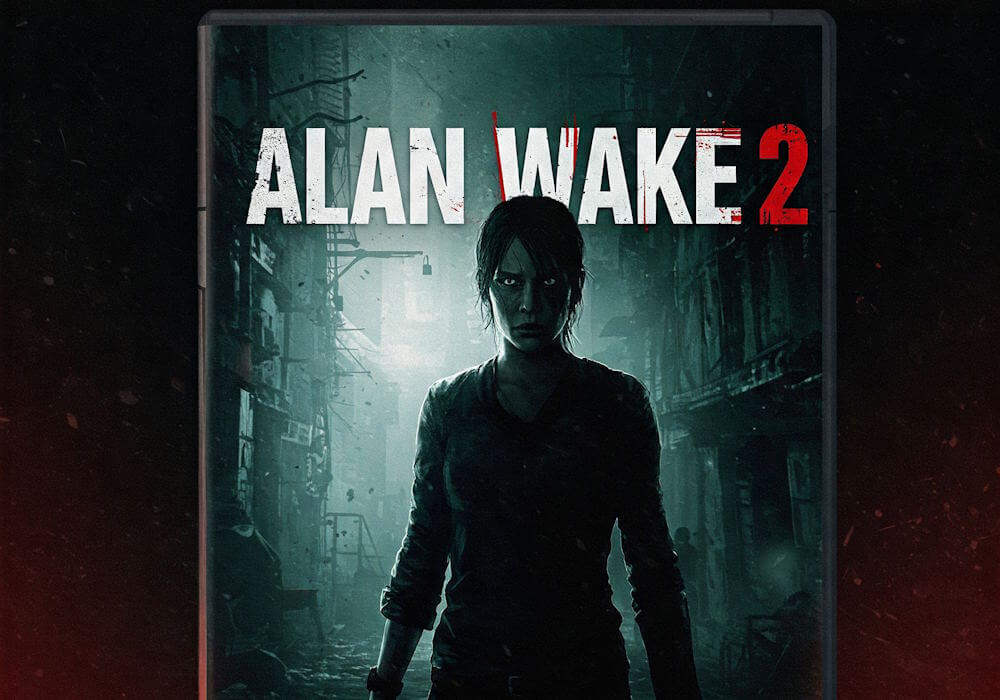Starfield, developed by Bethesda Game Studios, marks a significant milestone in the realm of space exploration games. This highly anticipated title takes players on a journey through the cosmos, inviting them to immerse themselves in an open-world experience that brilliantly combines deep storytelling with the allure of the vast universe. As fans eagerly awaited its release, the excitement surrounding Starfield grew, fueled by Bethesda’s strong reputation for delivering immersive games packed with rich narratives and intricate worlds.
The primary focus of Starfield is to revolutionize the exploration genre, offering players the chance to traverse planets, moons, and various celestial bodies while engaging in activities that go beyond mere navigation. The game encourages a sense of adventure and discovery as players encounter various factions, missions, and lore that further enrich their space travels. This emphasis on open-world exploration is designed to make each player’s experience unique, with a multitude of paths to choose from and countless stories to unfold.
In the lead-up to its launch, Starfield garnered considerable attention and hype, with many gaming enthusiasts speculating about the features and mechanics that would define its gameplay. The game’s developer, known for franchises like The Elder Scrolls and Fallout, has a reputation for deep lore and complex systems. Therefore, it was only natural that players anticipated the same level of complexity and depth in Starfield. As a pioneering venture into the genre of exploration games, Starfield promises to blend traditional RPG elements with innovative space dynamics, setting the stage for an unprecedented experience. The significance of this title extends beyond mere gameplay; it aims to redefine how players interact with the vastness of space in video games, ensuring that every encounter feels meaningful and memorable.
Gameplay Mechanics and Features
‘Starfield’ introduces players to a meticulously crafted universe, emphasizing innovative gameplay mechanics that redefine space exploration. Central to the experience is the game’s rich space travel system, which allows players to traverse between celestial bodies in a dynamic and immersive manner. Players can engage in ship-to-ship combat, but the game also encourages a more nuanced approach through diplomacy with various factions, establishing a balance that enhances the overall gameplay narrative.
The ship customization feature is one of ‘Starfield’s’ standout elements. Players can modify their spacecraft according to their personal preferences and gameplay style. This includes alterations to ship structure, weaponry, and technological enhancements, which directly impact both performance and aesthetics. Such customization not only enhances the player’s connection to their ship but also affects the strategies they can employ during exploration and combat situations.
Resource management plays a crucial role in ensuring players maintain a sustainable approach to their journeys across the stars. Gathered materials can be utilized for upgrades, repairs, or trading, injecting a survival aspect into the gameplay. Players are required to think critically about resource allocation while navigating the procedural generation of planets, each with unique ecosystems, biomes, and opportunities for discovery.
Moreover, ‘Starfield’ masterfully blends combat with exploration. Players face the choice of adopting a confrontational stance or seeking peaceful alternatives when interacting with various alien species and factions. This duality not only enriches the gameplay but also invites players to tailor their experience based on personal preferences. Overall, the gameplay mechanics and features in ‘Starfield’ provide a fresh and engaging take on space exploration, combining complexity with accessibility for both new and seasoned gamers.
Visuals and Sound Design
In the realm of video games, visuals and sound design play a pivotal role in shaping player experience. ‘Starfield’ embraces this notion wholeheartedly, presenting a meticulously crafted visual landscape that immerses players in its expansive universe. The game’s graphics are remarkable, showcasing rich textures, detailed spacecraft, and diverse planetary environments that invite exploration. The art direction harmonizes realism with a touch of sci-fi aesthetics, ensuring that every visual component, from the shimmering stars to the atmospheric glow of distant planets, resonates with the theme of space exploration. This attention to detail culminates in an engaging visual experience that encourages players to delve deeper into the game’s vast cosmos.
The design choices made in ‘Starfield’ not only enhance the graphics but also contribute significantly to the game’s overall atmosphere. Lighting effects are particularly noteworthy; the interplay of light and shadow across various terrains adds depth and realism. Furthermore, the seamless transition between space and planetary environments showcases advanced rendering techniques, making the journey between celestial bodies feel fluid and exciting. Such visual fidelity connects with players, allowing them to feel the scale and grandeur of the universe they inhabit.
Equally important to ‘Starfield’s’ immersive experience is its sound design. The game’s music score, composed to evoke wonder and adventure, complements the stunning visuals perfectly. Each score dynamically adjusts to gameplay, enhancing moments of tension during space battles or encouraging contemplation when exploring serene alien landscapes. Sound effects further amplify the immersion, with realistic audio cues during space travel and interactions, such as the hum of spacecraft engines or the distant echo of alien environments. Together, the visuals and sound design of ‘Starfield’ effectively transport players into its universe, creating an unparalleled space exploration experience.
Story and World-Building
‘Starfield’ emerges as a landmark entry in the realm of space exploration games, blending expansive lore and intricate character development to create a compelling narrative experience. Set in a meticulously crafted universe, players are thrust into a vast narrative that is rich with history, diverse civilizations, and engaging faction dynamics. The overarching storyline revolves around humanity’s quest for knowledge and adventure among the stars, embracing themes of exploration, conflict, and unity.
Central to the narrative are various factions that players can interact with, each boasting its unique motives and cultural backgrounds. This interaction not only enhances the depth of storytelling but also allows for a dynamic gameplay experience. Players have the opportunity to align themselves with different groups, leading to choices that significantly influence the game’s progression. These choices infuse a sense of personal stake in the outcomes, as alliances can affect plot developments and character arcs.
Delving into the game’s world-building, Bethesda has developed an expansive universe populated by diverse alien species and advanced civilizations. Each race and faction is embedded with rich histories and distinct societal structures, making the exploration feel alive and immersive. Players instigate both curiosity and challenge as they encounter nuanced relationships between the different factions, uncovering secrets hidden within the lore. The game artfully weaves hidden narratives into its environments, ensuring that players feel the breadth of the universe as they venture through various star systems.
Moreover, the depth of character development in ‘Starfield’ further enriches the player’s journey. Characters maintain complex personalities, often evolving based on player interactions and decisions throughout the storyline. This level of engagement invites players to invest emotionally in their companions and the overarching mission of discovering humanity’s role in the cosmos. As such, ‘Starfield’ not only reimagines space exploration but also establishes itself as a narrative-driven experience that captivates and challenges players at every turn.
Exploration and Content Variety
The exploration aspect of ‘Starfield’ represents a significant leap in the realm of space exploration games, offering players a vast array of environments that range from desolate, barren planets to vibrant, bustling space cities. This diversity in settings not only enhances the visual appeal but also heightens the sense of adventure. Each location serves as a backdrop for discovery, and players are encouraged to immerse themselves in the intricacies of the universe.
One of the standout features of ‘Starfield’ is its extensive variety of quests and side missions. Players can engage in main storyline missions that unfold an overarching narrative, while also having the option to embark on numerous side quests that add depth to the gameplay experience. These side missions often delve into the lore of the universe, allowing players to uncover hidden stories and appreciate the rich history behind different factions and worlds. The inclusion of collectibles scattered throughout the game further incentivizes exploration, as players are motivated to traverse different environments to unlock achievements and lore tidbits.
In addition to terrestrial exploration, ‘Starfield’ introduces players to the enigmatic concept of space anomalies and mysteries. These anomalies act as gateways to unique experiences, encouraging players to venture beyond what is known and dive into the unknown. The unpredictability of these celestial phenomena can lead to unexpected encounters or discoveries, which maintain a sense of suspense and excitement throughout the gameplay. They not only serve to enrich exploration but also provide opportunities for players to engage in problem-solving scenarios that can enhance their skills and strategies.
Overall, the combination of diverse environments, engaging quests, and intriguing mysteries positions ‘Starfield’ as a compelling title for fans of exploration and adventure. It successfully keeps players engaged by continuously offering new content and challenges that invite them to delve deeper into the cosmos.
Comparison with Other Space Exploration Games
In the realm of space exploration games, ‘Starfield’ emerges as a noteworthy contender, especially when juxtaposed with titles such as ‘No Man’s Sky,’ ‘Elite Dangerous,’ and ‘Everspace.’ Each of these games has unique gameplay mechanics and narrative approaches, contributing to the broader landscape of the genre.
‘No Man’s Sky,’ for instance, is celebrated for its procedurally generated universe, which offers players an almost infinite space to explore. However, while it emphasizes exploration and resource gathering, it has faced criticism for its shallow narrative and character development, which can reduce player engagement over time. On the other hand, ‘Starfield’ aims to enhance narrative depth. It promises a more structured storytelling experience, placing players in a universe filled with rich lore and intriguing quests that encourage deeper immersion.
‘Elite Dangerous’ stands out due to its simulation-centric approach, offering a realistic depiction of space flight and trading. This game emphasizes the importance of player-driven economy and collaboration within a vast, open-world environment. In contrast, ‘Starfield’ incorporates these elements but balances them with RPG mechanics that facilitate character customization and development, making the experience accessible to both new and veteran players.
Meanwhile, ‘Everspace’ offers a different angle with its roguelike mechanics and fast-paced combat, focusing more on action than exploration. It caters to players seeking immediate gratification through exhilarating dogfights in dynamic environments. ‘Starfield,’ however, seeks to merge engaging space combat with exploration and storytelling, creating a harmonious balance that sets it apart from its peers.
Overall, while each of these titles contributes uniquely to the space exploration genre, ‘Starfield’ stands out for its commitment to narrative depth and player engagement, striving to redefine the experience of traversing the cosmos.
Community Feedback and Reception
Since its launch, ‘Starfield’ has garnered a wide range of feedback from the gaming community, reflecting both enthusiasm and criticism. Players have taken to various social media platforms to share their experiences, with a notable number expressing excitement over the game’s expansive universe and intricate mechanics. Many fans have highlighted the depth of the narrative, praising the complex character development and immersive storytelling that enrich the gameplay. This enthusiasm aligns closely with pre-release expectations, where the promise of vast exploration and compelling narratives were major selling points.
However, the game has not been without its detractors. Some community members have voiced concerns regarding specific gameplay mechanics, claiming that certain features feel underdeveloped or lack polish. Complaints have emerged about the user interface, with critics stating that it could be more intuitive, potentially hampering the player experience during exploration. Additionally, technical issues have been reported, particularly related to performance on various platforms, which has led to frustration among players hoping for a seamless experience.
Professional reviews from gaming critics have echoed some of these mixed sentiments. While many reviews commend ‘Starfield’ for its ambitious scope and rich world-building, they also reflect on the concerns raised by players regarding specific shortcomings. This critical reception encourages a broader discussion on high expectations set prior to the game’s release and whether ‘Starfield’ ultimately delivers on these promises. The combination of community feedback and critical reviews presents a nuanced picture, illustrating the game as a remarkable, albeit flawed, addition to the space exploration genre. The overall response reflects a moment of anticipation for further updates and improvements from the developers.
Future Updates and Expansions
As ‘Starfield’ set a new standard in the realm of space exploration video games, the anticipation surrounding future updates and expansions remains high among the community. The developers at Bethesda Game Studios have emphasized their commitment to ongoing support for the game post-launch, aiming to enhance gameplay and expand the universe through potential downloadable content (DLC). This strategic approach is critical, as it not only keeps the player base engaged but also retains interest over time.
While specific details regarding announced DLC are yet to be disclosed, community speculation is rife with possibilities. Many players are hoping for additional storylines that delve deeper into the lore of ‘Starfield’, possibly exploring the histories of various factions or introducing new characters that could significantly impact the overarching narrative. Furthermore, the introduction of new planets, star systems, and even gameplay mechanics could vastly enrich the existing experience. Players have voiced a desire to see more nuanced crafting systems or additional ship customization options, which would allow for a more personalized experience.
Moreover, the importance of regular updates cannot be overstated. By introducing new content and features, developers can address any balance issues that arise and incorporate community feedback effectively. Such ongoing improvements are essential to maintaining player engagement, as they provide fresh experiences and maintain the excitement that ‘Starfield’ has cultivated since its release. In doing so, they ensure that players not only return to the game but are also motivated to explore uncharted territories within its expansive universe. The ongoing dialogue between developers and the community, alongside the release of content updates, will ultimately shape the long-term success of ‘Starfield’ and its legacy in the gaming sphere.
Conclusion: The Impact of Starfield
In evaluating the profound impact of Starfield, it becomes evident that the game stands as a pioneering force in the realm of space exploration. With its intricate world-building and immersive gameplay mechanics, it not only captivates players but also redefines expectations for the genre. The vastness of space has been meticulously crafted, offering players a rich tapestry of celestial bodies to explore, missions to undertake, and narratives to unfold, thereby enhancing the overall gaming experience.
One of the most noteworthy aspects of Starfield is its commitment to authenticity in space exploration. By incorporating realistic elements, such as gravitational physics and a diverse array of spacefaring technologies, it bridges the gap between fantasy and reality. This attention to detail sets a new benchmark for future titles, encouraging developers to pursue a similar level of engagement with the science behind space travel.
Moreover, Starfield fosters a sense of wonder and curiosity. Players are not merely observers in a virtual space; they are active participants in a grand adventure that promotes exploration and discovery. This central theme resonates both with seasoned gamers and newcomers alike, suggesting that the genre has a bright future ahead. The immersive storytelling elements also invite personal reflection, presenting ethical dilemmas and decisions that enrich the player’s experience beyond mere gameplay.
Ultimately, Starfield is likely to serve as a catalyst for future space exploration games, inspiring developers to innovate and push the boundaries of what players can expect from this genre. As we look ahead, it is clear that Starfield has not only redefined space exploration gaming but has also set a high standard for narrative depth and player engagement that future titles will strive to achieve.



